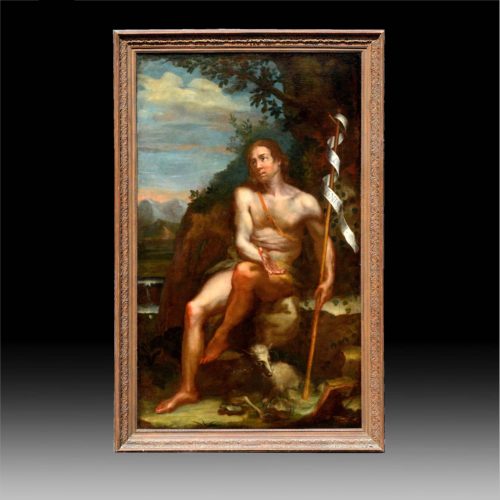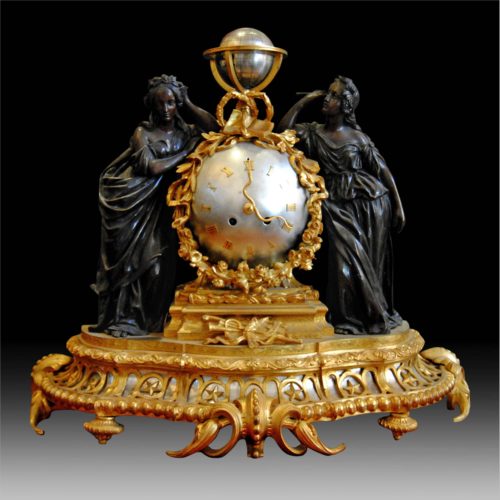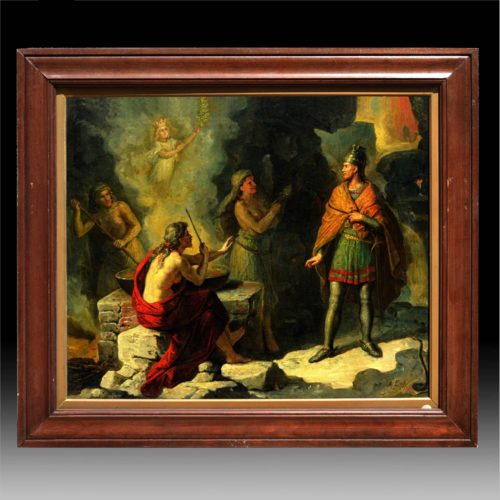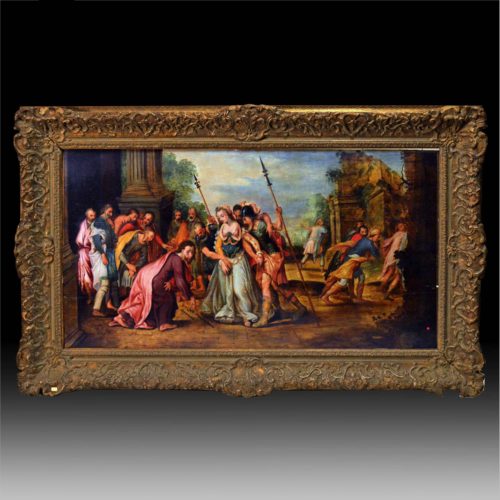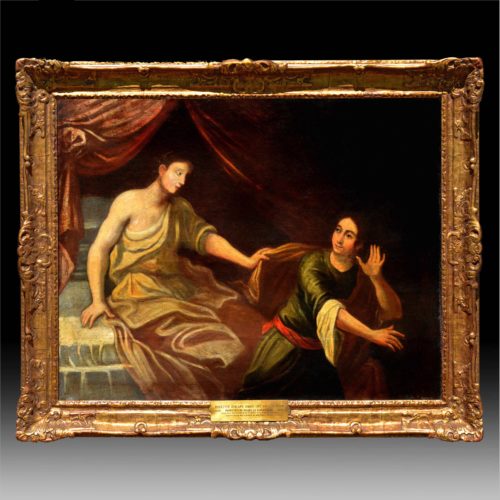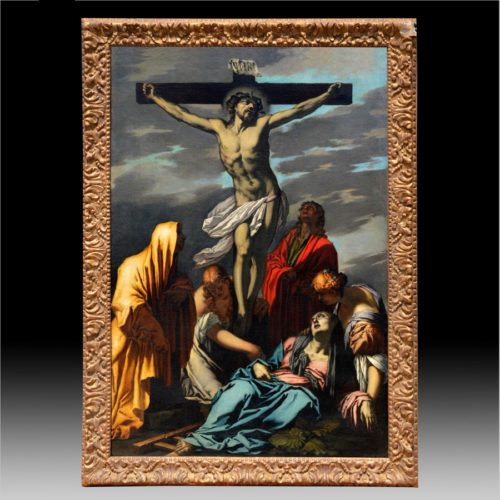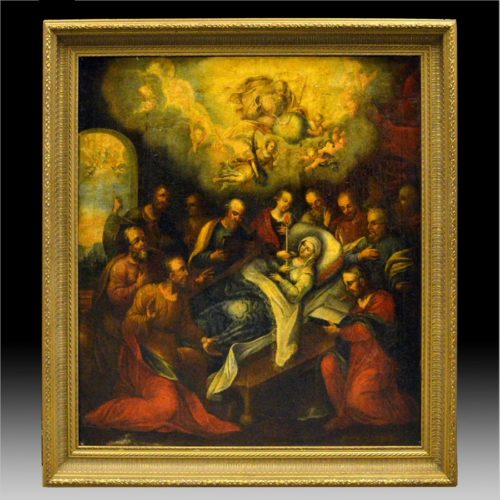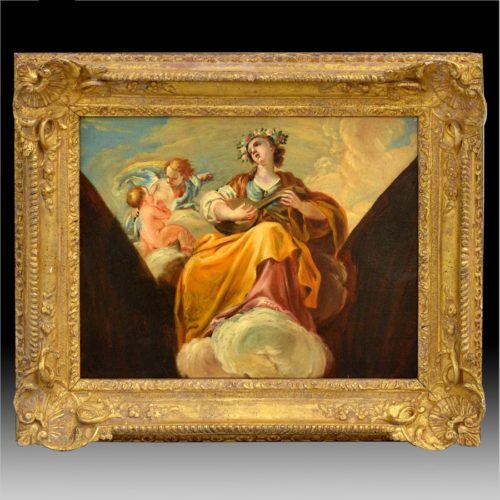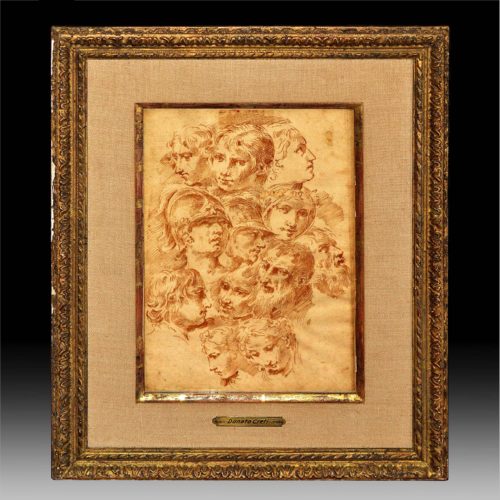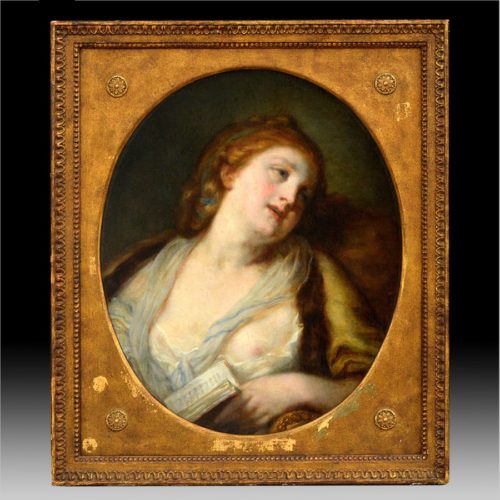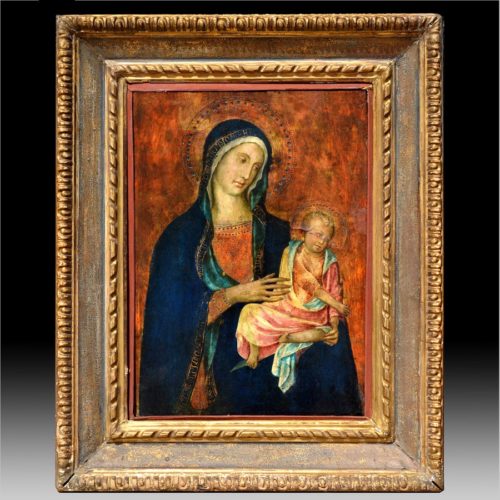-
A Patinated Bronze Mantel Clock with Silver Spheroid Dial (Set of 3 Pieces).
-
War Scene Oil on canvas 22 ½” x 27” Year of work: 1880
-
Francesco Di Simone da Santa Croce (1480-1548) “Joseph’s Escape from Potiphar’s Wife” From the collection of Pinero Migliorati Lugano, Taken from Old Church in Northern Italy (one of five). @NB-1040 #88
-
Francisco Bayeu Y Subias (1734-1795) “An Allegorical Figure of Music, a Study for a Pedentive” Oil on paper laid down on canvas 13 ¼ x 16 ½ inches Francisco Bayeu y Subias (9 March 1734 – 4 August 1795) was a Spanish painter, active in a Neoclassic style, whose main subjects were religious and historical themes. Born in Zaragoza, Aragon, he received a broad childhood education. He then moved to Madrid, winning a scholarship with the painting of the ‘’Tyranny of Gerion’’ to study in the Academia Real de Bellas Artes de San Fernando. The death of his parents and the care of his brothers forced him to return to Zaragoza, until he was recalled by Anton Raphael Mengs to help decorate the Royal Palace of Madrid. He served as court painter to King Charles III of Spain. He was named a professor of the Royal Academy of Fine Arts of San Fernando in 1765 and director in 1788. He painted in the Charterhouse of Aula Dei in Zaragoza. In 1767 he was named court painter for Charles III, king of Spain. He was involved in the decoration of various Royal palaces near Madrid. He helped provide designs for tapestries. He also painted for the College of San Ildefonso, the Royal Monastery of the Incarnation (Madrid), the Basilica of our Lady del Pilar in Zaragoza, and the cloister of the Cathedral of Toledo.
-
Donato Creti “Studies of Heads” Pen and brown ink on paper 10 ¾ x 7 ¼ inches @NB-1040 #26 Donato Creti (24 February 1671 – 31 January 1749) was an Italian painter of the Rococo period, active mostly in Bologna. Born in Cremona, he moved to Bologna, where he was a pupil of Lorenzo Pasinelli. He is described by Wittkower as the "Bolognese Marco Benefial", in that his style was less decorative and edged into a more formal neoclassical style. It is an academicized grand style, that crystallizes into a manneristic neoclassicism, with crisp and frigid modeling of the figures. Among his followers were Aureliano Milani, Francesco Monti, and Ercole Graziani the Younger. Two other pupils were Domenico Maria Fratta and Giuseppe Peroni.
-
A Louis XVI Style Bronze and Gray Marble Garniture (Set of 5 Pieces): Clock, Pair of Tazzas, and a Pair of Five-Light Candelabra. Height of Candelabra: 23 ½ inches.
-
Jean Baptiste Greuze (French, 1725-1805) Oil on canvas 21 x 17 ½ inches S71791-147 1102508-3 @AL 7/13

